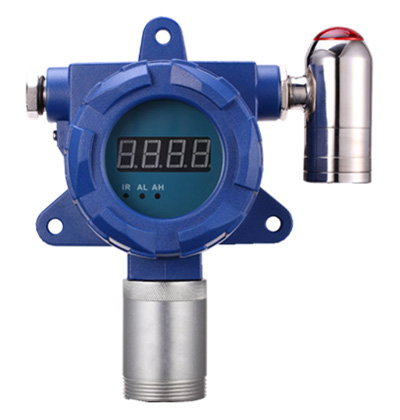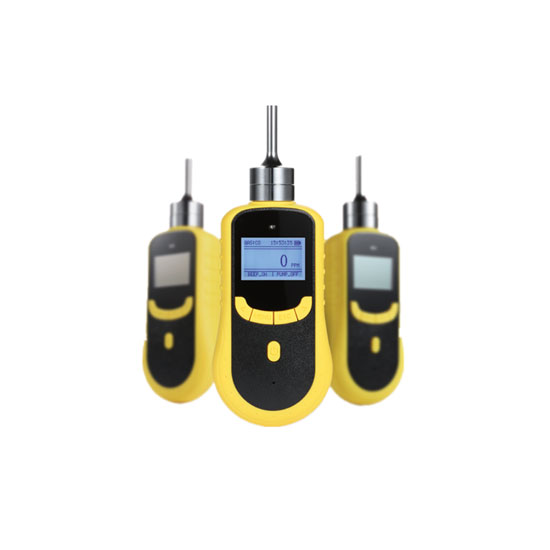How to Choose a Gas Detector?
Gas detectors are widely used in petrochemical, environmental protection, gasoline, coal mining and other industries. For all kinds of different safety production occasions and testing requirements, the selection of a suitable gas detector must be very important for every person engaged in safety and health work.
Confirming the type and concentration range of the gas to be tested
The type of gas encountered in each production department is different. All possible situations should be considered when selecting a gas detector.
For example, in the mining environment of coal mines, methane and less toxic alkanes, it is undoubtedly the most suitable choice for the selection of combustible gas detectors. This is not only because the detection principle of the gas detector is simple, the application is wide, but also it has the characteristics of convenient maintenance and calibration.
If there exists a toxic gas such as carbon monoxide, hydrogen sulfide, ammonia, oxygen, hydrogen, phosphine and other gases, it is preferred to select a single gas detector that simultaneously detects CO, H2S, NH3, O2, etc., to ensure worker safety.
If there are more organic toxic and harmful gases, considering the lower concentration of human poisoning, such as aromatic hydrocarbons, halogenated hydrocarbons, ammonia (amines), ethers, alcohols, fats, etc., PID photoionization detector should be chosen, and never use a LEL gas detector to deal with, which may lead to casualties.
If the gas type covers the above types of gases, choosing a multi gas detector may achieve twice the result with half the effort.
Choosing different types of gas detector based on industrial environment
1. Fixed gas detector
This kind of gas detectors are used more in the industrial plants and in production processes. The fixed detector is generally divided into two parts: the detection probe consisting of the sensor and the transmission component is installed at the inspection site; the secondary instrument consisting of the circuit, power supply and the display alarm device is installed in a safe place for monitoring.
The fixed gas detector is more suitable in the process needing for the continuous , long-term, stabile detection. The fixed type detector is also selected according to the type and concentration of the gas in the field. It is also noted that the fixed gas detector should be installed in the most likely part of the specific gas leakage.
2. Portable gas detector
Because the portable gas detector is easy to operate and compact, it can be carried to different production sites. The handheld gas detector is usually powered by alkaline batteries or ithium-ion batteries and can be used continuously for long time. So, this type of equipment in all kinds of plants and the application of the health sector is more and more widely used. The portable gas detectors have two types of gas sampling, diffusion and pump.
If it's an open situation, such as an open work shop, the portable diffusion-type gas detector can be chosen and used as an alarm and it can display the concentration of toxic and harmful gases in the field continuously, in real time and accurately. This type of gas instrument is also equipped with a vibration alarm to avoid not hearing audible alarms in noisy environments, to provide specific guidance for workers' health and safety.
 If you enter a confined space, such as reaction tanks, storage tanks or containers, sewers or other underground pipelines, underground facilities, agricultural closed granaries, railway tankers, shipping cargo tanks, tunnels, etc., you must choose a multi-gas detector with built-in sampling pump, since the gas distribution and gas type in different parts of the confined space are very different.
If you enter a confined space, such as reaction tanks, storage tanks or containers, sewers or other underground pipelines, underground facilities, agricultural closed granaries, railway tankers, shipping cargo tanks, tunnels, etc., you must choose a multi-gas detector with built-in sampling pump, since the gas distribution and gas type in different parts of the confined space are very different.
For example, the proportion of flammable and explosive gases is relatively light in general and most of them are distributed in the upper part of the confined space; the carbon monoxide and air is similar in the weight, generally distributed in the middle of the confined space; the heavier gases such as hydrogen sulfide exists in the lower part of the confined space. At the same time, the oxygen concentration is also one of the types that must be detected. In addition, a detector that can detect organic gases is also needed if the volatilization and leakage of organic toxic gases are taken into account. Therefore, in a complete confined space,a gas detector should be equipped with a built-in pumping function,so as to make the non-contact, sub-site detection; the multi-gas detectors is also required to detect different spatial distribution of hazardous gases, including inorganic gases and organic gas; the oxygen detector is needed to prevent hypoxia or oxygen enrichment. Only in this way can the absolute safety of the personnel entering the confined space be guaranteed. In addition, after entering the confined space, the gas components should be continuously measured to avoid changes in the concentration of volatile organic compounds or other toxic and harmful gases caused by personnel entering, sudden leakage, and temperature changes.
If it is used for the emergency, leak detection or inspection,the pumping type gas detector should be selected due to its fast response, high sensitivity and high resolution, to make it easy to determine the location of the leak.
ATO provides you with a series of fixed and portable gas detectors with different measuring range to meet your different requirements, handheld NH3 detector, portable Cl2 detector, fixed H2S detector...

